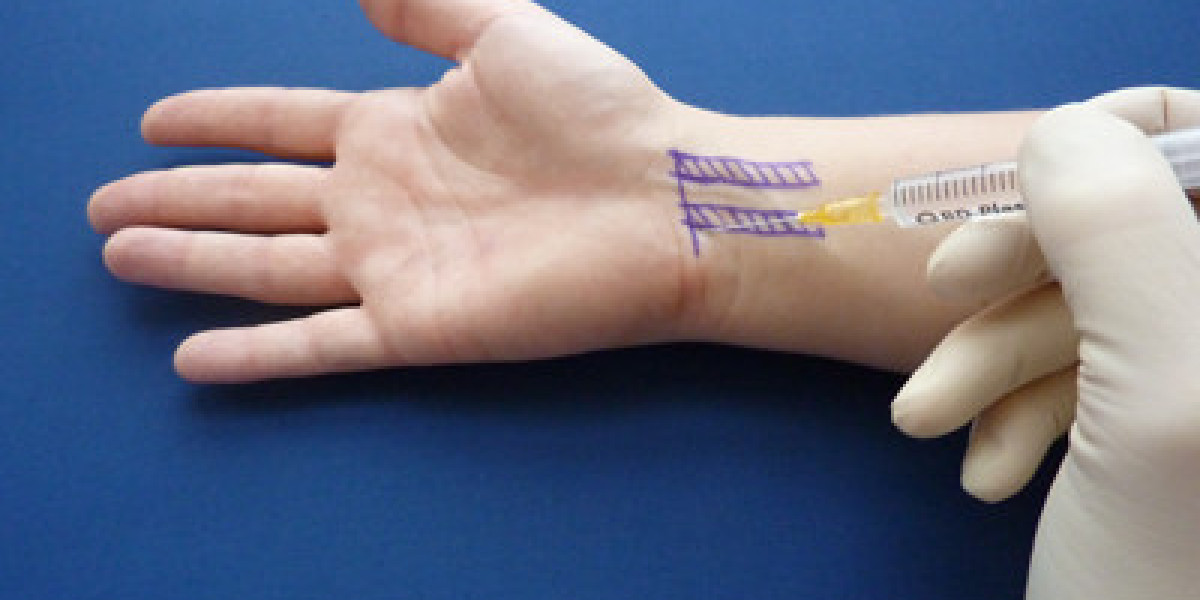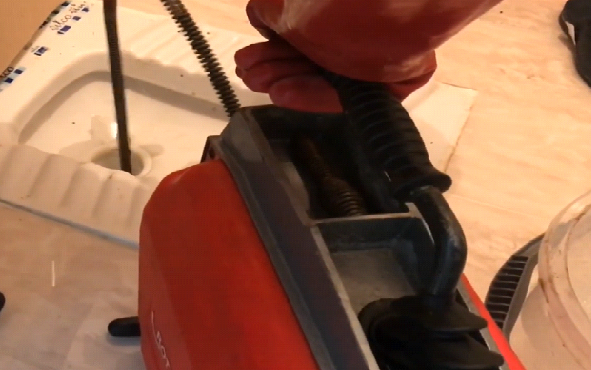Carpal Tunnel Syndrome (CTS) is a common condition that affects the hand and wrist, caused by pressure on the median nerve — a vital nerve that runs through the wrist’s narrow passageway known as the carpal tunnel. This pressure often results in tingling, numbness, pain, and weakness in the hand. People who work with repetitive wrist movements, such as typing, assembly line work, or manual labor, are especially prone to this condition. If left untreated, it can worsen over time, significantly impacting hand strength and function.
How Carpal Tunnel Injections Work
Carpal tunnel injections are a non-surgical treatment option designed to relieve inflammation and swelling around the median nerve. These injections typically contain a corticosteroid (a powerful anti-inflammatory medication) combined with a local anesthetic to reduce pain and inflammation directly at the site. By minimizing swelling inside the carpal tunnel, the pressure on the median nerve decreases, leading to symptom relief.
The process is simple and relatively quick. A healthcare professional locates the correct injection point, often guided by ultrasound for accuracy, and administers the medication into the carpal tunnel. The patient may feel immediate relief from the anesthetic, followed by gradual improvement over the next few days as the steroid begins to work.
Who Can Benefit from Carpal Tunnel Injections
Carpal tunnel injections are ideal for individuals experiencing mild to moderate symptoms of CTS or for those who want to delay or avoid surgery. They can also serve as a diagnostic tool — if symptoms improve after the injection, it confirms that the carpal tunnel is indeed the source of pain and numbness. Patients who are not ready for surgical intervention or have health conditions that make surgery risky often find this treatment beneficial.
However, for severe cases — especially when there is muscle wasting or constant numbness — surgery may be the only effective long-term solution. Consulting a specialist is always the best approach to determine the right treatment plan.
What to Expect During the Procedure
A carpal tunnel injection is performed in a clinical setting and takes only a few minutes. The doctor may apply a numbing spray or cream before the injection to make the process more comfortable. Once the area is sterilized, the corticosteroid mixture is injected into the wrist. Afterward, patients may experience slight soreness or bruising at the injection site, which typically resolves within a couple of days.
It’s recommended to rest the wrist for 24–48 hours after the injection, avoid heavy lifting, and use a wrist splint if advised by the doctor. Over the following days, symptoms such as tingling, pain, and weakness usually improve significantly.
How Long Do Carpal Tunnel Injections Last?
The duration of relief from a carpal tunnel injection varies from person to person. Some patients experience relief for several months, while others notice improvement lasting up to a year. However, it’s important to understand that while carpal tunnel injections can effectively reduce symptoms, they do not cure the underlying cause. Repeated injections may be needed if symptoms return, but doctors generally recommend limiting the number of steroid injections to prevent potential side effects such as tissue weakening or nerve irritation.
Advantages of Carpal Tunnel Injections
One of the biggest benefits of carpal tunnel injections is their ability to provide quick and effective relief without surgery. The procedure is minimally invasive, relatively painless, and offers a short recovery time. Many patients are able to return to daily activities within a day or two. Additionally, it can serve as an excellent interim solution while exploring other long-term management strategies like physical therapy, ergonomic adjustments, or wrist braces.
Compared to oral medications, carpal tunnel injections deliver the medication directly where it’s needed most — targeting inflammation at the nerve site. This precision allows for faster and often more powerful symptom control.
Potential Risks and Side Effects
While generally safe, carpal tunnel injections do carry some potential risks. Common side effects include temporary soreness, mild swelling, or redness at the injection site. Rarely, patients may experience allergic reactions, infection, or nerve damage. Long-term or excessive use of corticosteroid injections can weaken nearby tissues and cause discoloration of the skin.
Therefore, it’s crucial that these injections are performed by a qualified healthcare provider with experience in treating nerve-related conditions. Discussing your full medical history and any current medications with your doctor helps minimize these risks.
Alternative Treatments for Carpal Tunnel Syndrome
In addition to carpal tunnel injections, several non-surgical options can help manage symptoms. Wrist splints are commonly used to keep the wrist in a neutral position, especially during sleep, to reduce nerve pressure. Physical therapy exercises that stretch and strengthen the wrist and hand muscles can also be effective. For some individuals, adjusting workplace ergonomics, such as changing keyboard height or using supportive wrist pads, can make a big difference.
If conservative methods fail, surgical decompression — known as carpal tunnel release — may be considered. This surgery involves cutting the ligament that is pressing on the nerve, thereby relieving pressure and restoring normal function.
When to Seek Medical Help
It’s important not to ignore the early signs of carpal tunnel syndrome. If tingling, numbness, or weakness persists or worsens despite rest and lifestyle changes, it’s time to see a doctor. Early diagnosis and treatment — including options like carpal tunnel injections — can prevent permanent nerve damage and loss of hand function.
Conclusion
Carpal tunnel injections provide an effective, minimally invasive way to manage pain and inflammation caused by Carpal Tunnel Syndrome. They offer temporary relief for many patients, allowing them to continue daily tasks without discomfort. While not a permanent cure, they play a vital role in reducing symptoms and delaying the need for surgery. With the right medical supervision and complementary therapies, patients can maintain wrist health and prevent recurrence.








